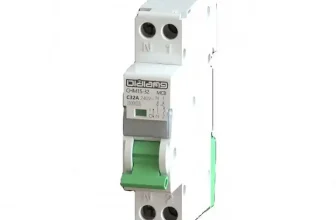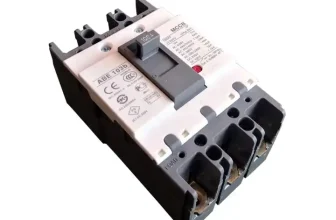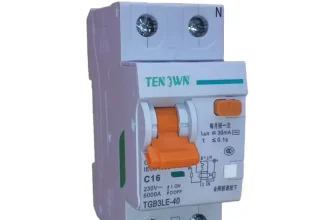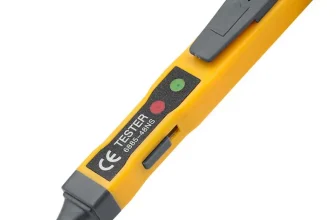Circuit breakers are automatic electrical switches designed to
safeguard your electrical system by interrupting a circuit whenever they
detect irregularities like an overload or a short circuit. These
essential components of any electrical system help to prevent electrical
fires or other potential problems caused by such irregularities. They
work as the sentinels of your home or office’s electrical system, acting
swiftly to prevent disaster when identified. In short, their function is
to promptly cut the power whenever it’s necessary. As they play such
crucial roles, it’s extremely important to understand how they work and
how to maintain their performance.
Explanation of the
purpose of the article
This article aims to delve into the world of circuit breaker finders,
a crucial yet often overlooked tool in electrical work. We will explore
what a circuit breaker finder is, how it operates, its various types,
and the key role it plays in both domestic and commercial settings. If
you’re considering investing in a circuit breaker finder or just curious
about its functionality, this comprehensive guide will provide you with
all the insights you need to understand and appreciate this essential
tool. Whether you’re a professional electrician or a do-it-yourself
enthusiast, the information contained in this article will prove
beneficial and aid in promoting electrical safety.
Understanding Circuit
Breakers
Definition and
function of a circuit breaker
A circuit breaker is an electrical safety device that functions as a
protective guard in an electrical system. Structurally, it comprises
switches that automatically go off under abnormal conditions,
particularly when excessive current flows through, to prevent any kind
of damage from electrical overloads or short circuits.
This interruption takes place due to the heat generated from the high
current, causing the breaker’s switch to flip and cease the entire flow
of electricity. In essence, the circuit breaker acts as a watchdog of an
electrical system, monitoring all activities and standing at the ready
to disrupt any potentially hazardous electric flow. This ability to
combat excessive flow of energy safeguards appliances and prevents
potential electrical fires, thereby playing a critical role in ensuring
safety.
Importance
of knowing the layout of circuit breakers
Knowing the layout of your circuit breakers is a key factor in
maintaining a safe and efficient electrical system in any building,
whether a commercial facility, a residential home, or an industrial
workspace.
There are several reasons why this knowledge is critical. Firstly, in
case of an electrical fault or overload, you would easily identify and
switch off the problematic circuit without having to randomly fumble
through all the breakers. This saves time and can prevent potential
damage to electronic devices connected to the circuit.
Secondly, understanding the layout helps in routine maintenance and
troubleshooting. If a particular fixture or outlet is not working,
knowing which circuit it is on makes it easier to isolate and rectify
the problem. Furthermore, if an electrician needs to work on a specific
part of your system, a clear understanding of your circuit breakers can
speed up the process and reduce labor costs.
Lastly, knowing the layout of your circuit breakers is vital in
emergency situations. In situations such as electrical fires, quick
access to the right breaker can make the difference between minimal
damage and extensive disaster. Without a proper understanding of the
layout, you may waste valuable time trying to figure out which switch to
turn off, thereby exacerbating the situation.
In conclusion, knowledge of your circuit breakers is essential for
efficiency, maintenance, and most importantly, safety.
The Need for a Circuit
Breaker Finder
Typical
problems faced without a circuit breaker finder
Without a circuit breaker finder, pinpointing the exact circuit
breaker associated with a specific electrical outlet or appliance can
turn into a time-consuming and frustrating task. The traditional
trial-and-error method includes switching off each breaker in turn and
checking whether the power to the target outlet or appliance has been
cut, requiring frequent trips to and from the main breaker panel.
This task becomes increasingly challenging in larger buildings with
numerous circuits, like commercial establishments, where there are far
more breakers to test. It can result in significant downtime, which, in
a business setting, can lead to loss of productivity and revenue.
Additionally, misguided attempts at identifying the correct breaker
could inadvertently disrupt power to crucial devices or infrastructure,
such as computers, security systems, or refrigeration units, leading to
potential data loss, security breaches, or spoilage of goods.
Lastly, without a circuit breaker finder, there’s also an increased
danger of carrying out potentially hazardous electrical work without
being absolutely certain the power is off, posing a risk of electrical
shock.
Benefits of using a
circuit breaker finder
A circuit breaker finder brings a multitude of benefits that make it
a worthy investment for both professionals and homeowners. The primary
advantage is enhanced safety. By accurately identifying the correct
breaker, it significantly minimizes the risk of electric shock and other
potential electrical hazards.
Another important benefit of using a circuit breaker finder is its
contributions to efficiency. This is particularly valid for electricians
and maintenance workers, as it eliminates guesswork, significantly
reducing the time and effort spent tracing electrical cabling or
manually testing each breaker.
The reliability of these devices is also noteworthy. They provide a
fast and precise way of locating the specific circuit breaker associated
with an outlet, making electrical work more accessible and
streamlined.
Moreover, a circuit breaker finder can help prevent unnecessary power
outages that can occur when one wrong switch is turned off. As a result,
any disruption to your, or your client’s, normal activities can be
minimized.
Lastly, a circuit breaker finder promotes proactive maintenance. By
accurately mapping your home or building’s electrical system, it’s
easier to spot and address potential issues before they escalate into
more significant problems. Thus, it supports preventive care, helping
increase the lifespan of your electrical system.
In summary, the myriad advantages of using a circuit breaker finder –
safety, efficiency, reliability, continuity of power, and preventive
maintenance – make it a valuable tool in managing and maintaining
electrical systems.
What is a Circuit Breaker
Finder?
Definition
and function of a circuit breaker finder
A Circuit Breaker Finder is a specialized tool designed to simplify
the process of identifying and locating a specific circuit breaker in a
panel box. Its primary function is to help electricians or homeowners
accurately determine which particular circuit breaker is linked to a
specific electrical circuit without having to guess or flip each breaker
individually. It significantly reduces the time, effort, and potential
risk involved in working with electrical systems.
The tool typically comprises two parts: a transmitter and a receiver.
The transmitter plugs into an electrical outlet, sends out a signal
through the circuit, which the receiver then picks up, pinpointing the
exact circuit breaker responsible for the outlet. This technology makes
the circuit breaker finder a priceless tool when undertaking electrical
tasks like installing new wiring, tracing circuits, or troubleshooting
electrical problems.
Explanation
of how a circuit breaker finder works
A circuit breaker finder operates in a fairly intuitive and
streamlined manner. Primarily, it consists of two parts: a transmitter
and a receiver.
To begin with, the transmitter is plugged into an electrical outlet.
Upon being plugged in, the transmitter then sends a signal along the
circuit. This signal is what the receiver will target when it’s used to
scan the circuit breaker box.
Following this, the receiver housing the sensor is moved along the
circuit breakers in the electrical panel. As the receiver is moved along
the panel, it ‘listens’ for the signal sent out by the transmitter. When
the receiver passes over the circuit breaker that controls the outlet
where the transmitter was plugged, it detects the signal. At this point,
it typically provides an audible and/or visual indicator to inform the
user they have found the correct circuit breaker.
In essence, the circuit breaker finder creates a unique digital
connection between the outlet and the circuit it’s tied to, negating the
need for tedious trial-and-error methods of circuit identification.
Types of Circuit Breaker
Finders
Detailed
description of the different types of circuit breaker finders
There are several types of circuit breaker finders, each with their
unique features and functionalities.
- Electronic Circuit Breaker Finders: These are the most commonly
used types. They come with a transmitter and a receiver. The transmitter
plugs into an outlet, and the receiver is used to scan the circuit
breaker panel. The receiver beeps or lights up when it’s over the
circuit that corresponds to the outlet where the transmitter is plugged
in. - Magnetic Circuit Breaker Finders: These finders make use of
magnetism to locate circuit breakers. They are simple to operate and do
not require any plug-ins, making them handy for quick work. However,
they are not as precise as electronic circuit breaker finders. - Digital Circuit Breaker Finders: These advanced finders are the
new breed in the market. Their functioning is much like electronic
circuit breaker finders, but they provide a digital interface. These
finders offer precise tracking and may also offer additional features,
such as built-in testing capabilities for GFCIs (Ground Fault Circuit
Interrupters). - Circuit Breaker Tracers: This tool is more advanced and used
often by professionals. Tracers can identify circuit breakers, trace
circuits, and detect circuit faults. They often come with
professional-grade features and are generally more expensive. - Infrared Circuit Breaker Finders: These are highly advanced types
that use infrared technology to identify heated fuses or circuit
breakers.
Each of these types of circuit breaker finders comes with its own set
of advantages and disadvantages. It is crucial to understand your
specific requirement before choosing one.
Pros and cons of each type
Circuit breaker finders come in a variety of forms and types, each
with its own unique advantages and disadvantages.
The first type is the digital circuit breaker finders. They are
highly accurate and quick to pinpoint the corresponding circuit breaker
of an outlet. They are equipped with digital displays, offering clear
readings and less likely to give false-positive results. However, they
are more expensive and may require a steeper learning curve to
understand their operation.
Another type comes with an automatic sensitivity adjustment feature.
The main advantage of this type is that they adjust themselves to the
signal strength, making the process more user-friendly. However,
sometimes, the automatic adjustment may not capture the right breaker on
the first attempt, especially in complicated or crowded panels,
potentially leading to trial-and-error situations.
The third type is non-contact voltage testers incorporated with a
circuit breaker finder. This type can detect voltage without direct
contact with the circuit, thereby providing an added level of safety.
However, the downside is that they may not be as precise as digital or
automatic sensitive adjustment types when it comes to identifying the
associated breaker.
Noise signal circuit breaker finders are another type where the
transmitter sends a noise signal into the circuit, and the receiver
traces the noise to the corresponding breaker. The advantage here is the
simplicity of this method, but it often requires a quiet environment to
work effectively.
Finally, plug-in circuit breaker finders are simple, no-frills
devices that are probably the most user-friendly of all. They simply
plug into an outlet and indicate the corresponding breaker—generally
through a light or beep. The downside is, they tend to lack the advanced
features of the other types and are not as reliable in complex
situations.
In conclusion, the types of circuit breaker finders each have their
own sets of pros and cons, and the best one for you will depend on your
specific needs, your comfort level with technology, your budget, and the
complexity of your breaker panel.
Using a Circuit Breaker
Finder
Step-by-step
guide on how to use a circuit breaker finder
To effectively use a circuit breaker finder, follow these simple
steps:
- Turn on Your Circuit Breaker Finder: Once you
have your device ready, switch it on. Some models may require a battery,
so ensure it’s appropriately powered. - Plug the Transmitter into the Outlet: The
circuit breaker finder will usually come with a transmitter. This
transmitter should be plugged into the outlet or fixture whose circuit
you want to find. - Run the Receiver Over the Circuit Breaker Box:
Next, take the receiver (the second part of the finder kit), and slowly
scan it over the circuit breaker box. Make sure to listen carefully as
different models indicate the found circuit in various ways – via
changing beep frequency, flashing lights, or visual indicators on a
screen. - Identify the Correct Circuit Breaker: As you run
the receiver over the breakers, it will emit a signal once it locates
the correct breaker. Some models can detect the circuit through the
breaker panel door while others may require you to open the door for
more accurate detection. - Double Check: To ensure you’ve found the right
circuit, switch off the identified breaker and check if the power is off
at the outlet or fixture. If it is, then you’ve successfully found the
correct circuit!
Remember, each model may have slightly different usage instructions;
therefore, it’s essential to familiarize yourself with your specific
device’s user manual.
Safety precautions to
take when using one
Using a circuit breaker finder is generally a safe process. However,
like any other tool or equipment dealing with electricity, it should be
wielded with appropriate caution. Here are some safety measures to keep
in mind while using a circuit breaker finder.
- Read and Understand the Instructions: Always start by thoroughly
reading and understanding the user’s manual of the particular circuit
breaker finder unit you have. Every model is slightly different, hence,
ensuring you know exactly how your unit works is vital. - Personal Protective Equipment: Wearing personal protective
equipment such as insulated gloves and safety footwear is advisable to
prevent any electrical shock incidents. - Working with Dry Hands: Ensure your hands are dry before you
attempt to use the circuit breaker finder. This minimizes the risk of
electric shock that can occur if the device becomes energized
accidentally. - Presence of Combustible Material: Make sure there is no
combustible material present around the area where you plan to use the
circuit breaker finder. - Professional Assistance: If at any point you feel even slightly
unsure or uncomfortable about using the circuit breaker finder, don’t
hesitate to contact a professional electrician. - Check Device Before Use: Always inspect your circuit breaker
finder before use. Look for any signs of damage or wear. If there’s any
indication that the tool may not be functioning properly, do not use
it.
Remember, safety should always be your top priority when dealing with
electricity. By taking these precautions, you can ensure that you use
your circuit breaker finder correctly and safely.
Purchasing a Circuit
Breaker Finder
Factors to
consider when buying a circuit breaker finder
When in the market for a circuit breaker finder, there are several
key factors to consider to ensure you’re getting a product that fits
your needs.
Firstly, it’s important to consider the accuracy of the device.
You’ll want a circuit breaker finder that can precisely and correctly
identify the circuit breakers, reducing the likelihood of mistakes that
can lead to potential electrical issues.
The range of the detector also plays a crucial role. If you’re
planning on using the device in large buildings or spaces, you might
need a circuit breaker finder with a more extended range to effectively
locate circuit breakers.
Durability is another factor that shouldn’t be overlooked. Electrical
tools like circuit breaker finders need to be sturdy and robust, able to
withstand the wear and tear of regular use. You wouldn’t want a device
that gets damaged easily or loses its accuracy over time.
Ease of use is another important consideration. While there’s a
learning curve to any new tool, you’d preferably want a circuit breaker
finder that’s user-friendly and doesn’t require an extensive period to
understand how to operate it effectively.
Lastly, consider the price of the circuit breaker finder. While you
might be tempted to go for the cheapest option available, remember that
you often get what you pay for. Investing in a higher-quality and
slightly more expensive model could save you a lot of hassle and
potential repair costs in the future. However, that doesn’t mean the
most expensive option is always the best. Always consider other factors
alongside the price to make an informed decision.
By keeping these factors in mind while shopping, you can ensure you
find a circuit breaker finder that can handle your specific needs and
provide consistent and accurate results.
Recommendations
for good circuit breaker finders in the market
Several circuit breaker finders in the market have been proven over
time to be reliable, efficient, and durable. The Klein Tools ET300
Digital Circuit Breaker Finder is one of those. Its automated
calibration ensures accuracy while finding the right circuit. It
operates on a simple plug-and-trace system, making it user-friendly.
Another excellent pick would be the Extech CB10 Circuit Breaker
Finder, which doubles as a GFCI (Ground Fault Circuit Interrupt) tester,
offering a 2-in-1 solution for many electricians. Its GFCI test feature
ensures your circuit breakers are properly protected against ground
faults.
The Southwire Tools & Equipment 41210S Circuit Breaker Finder Kit
also deserves mention. It comes as a kit including a transmitter,
receiver, and a fitted storage case. It is straightforward,
cost-effective, and efficient.
Lastly, the IDEAL 61-534 Digital Circuit Breaker Finder is notable
for its numeric value and audible signal feature, which removes all the
guesswork out of identifying the correct breaker.
However, remember that the best choice would ultimately depend on
your specific needs and budget. Review individual product specifics,
customer reviews, and pricing models to find the one breaker finder that
is ideally suited to your specific needs.
Conclusion
Recap
of the important points about circuit breaker finders
Circuit breaker finders have been revealed as essential tools in
ensuring electrical safety and efficiency. They play a crucial role in
detecting the specific circuit breaker that corresponds to any given
outlet, thus simplifying the process of performing electrical tasks.
Over time, these devices have evolved to offer a variety of functions
and types, catering to both professional electricians and DIY
homeowners. Remember to consider the ease of use, accuracy, and any
additional features when purchasing a circuit breaker finder.
Ultimately, with the assistance of a circuit breaker finder, a
potentially tiresome and delicate task is made safer and more
manageable. Their merits emphasize the importance of these devices in
the realms of electrical maintenance and repair.
Emphasis on
their importance in electrical safety
Circuit breaker finders significantly contribute to maintaining
electrical safety in homes, offices, and other environments. With them,
detecting the right branch circuit without turning off power to the
whole property, a common risk associated with circuit detection, is
mitigated. This not only minimizes the chances of electrical shocks but
also contributes to protecting your electronic devices from potential
damage due to a sudden power cut. Hence, they prove to be a powerful
asset in ensuring safety and efficiency when working with electrical
systems. Their relevance heightens further, considering the complex
electrical circuits in modern-day buildings. Thus, owning a circuit
breaker finder isn’t just a matter of convenience, but one of safety and
efficiency.







